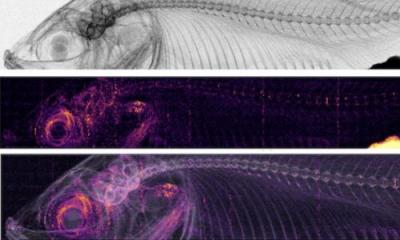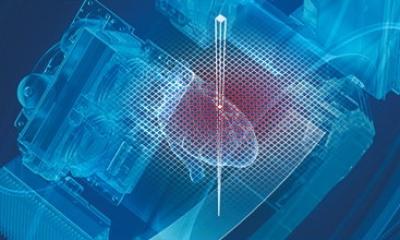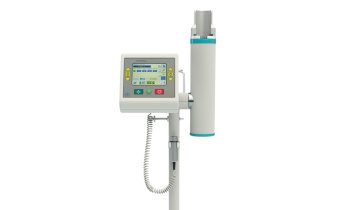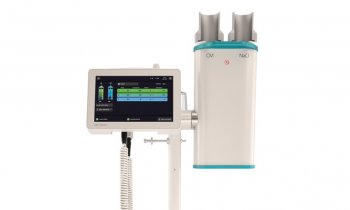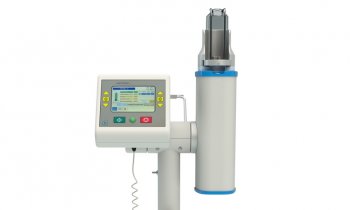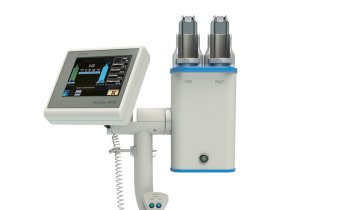Dual source CT reduces heart catheterisations
Interview by Daniela Zimmermann
Prof. Stehphan Achenbach about his experience with the dual source CT and its impact on cardiac diagnostics.

When introduced about a year ago, the first dual source CT was forecast to become particularly relevant in cardiology. Today, its clinical application can be evaluated. Daniela Zimmermann asked Professor Stephan Achenbach (SA), of the Cardiology Department, Erlangen University Hospital, about its impact on cardiac diagnostics.
Prof. Achenbach: Computed tomography, in general, has gained importance in cardiology. Beginning with the 16-row CT scanner, under certain circumstances it had become possible to visualise coronary vessels. The 64-row scanner provides even more reliable results. That was a major development, because before the introduction of CT to cardiology, to examine coronary vessels usually invasive catheterisation had to be used. Today, we can decide far better which patients require a catheter and which do not. In some instances, CT can serve as that filter, which helps to reduce the number of catheterisations.
It is above all cardiology that profits from dual source CT: due to shorter exposure times motion artefacts are avoided, which means the heartbeat no longer causes imprecisions. This has two advantages: first, a more precise image of the coronary vessels, and thus improved diagnostic reliability. Second, to avoid movement artefacts the patient’s heart rate no longer has to be slowed with a beta blocker. Also, we can now examine patients with high heart rates.
Could the new 256-row scanners do this?
While the number of rows of a CT is relevant for the total duration of the imaging process, it does not necessarily improve the temporal resolution, and thus image quality. With the 256-row scanner the total time required for image generation will be further reduced, which means the patient’s breath hold time will be shorter. However, the exposure time per image will not change.
Consequently, a 256-row scanner does not automatically provide improved temporal resolution and image quality compared with a scanner with fewer slices. The important issue with the dual source CT is that it has two X-ray sources that are positioned at a 90° angle to each other. A conventional CT image usually consists of 180° data, which corresponds to about half a rotation. With dual source CT, we only need a quarter of a rotation, due to the two sources. An image can be taken twice as quickly than before and exposure time is shorter. This means more images are entirely motion-free. An increased number of rows alone does not offer this effect.
Which patients benefit from dual source CT?
Typically, those presenting symptoms that do not unambiguously indicate the presence of a coronary artery narrowing or occlusion. For example, this is quite common: There is a clinical reason to check for stenoses, but the symptoms, and the stress examinations, indicate only low or average probability of coronary heart disease. Before, in order to exclude coronary stenoses, these patients had to undergo catheterisation. Today, we can perform a cardiac CT first. If the CT shows normal coronaries, we can be very certain that no stenoses are present and the patient doesn’t need catheterisation. Another example: A patient with acute chest pain presents at emergency admissions, the ECG is normal; there are no other signs of myocardial injury or impairment. With a CT we can determine whether the heart causes the pain, or if there’s another reason. Helped by CT we can provide a quick answer – a crucial factor in acute care.
Additionally, CT enables us to detect coronary plaque and calcification, early. Thus, patients who don’t yet show stenoses - but considerable atherosclerosis – can be treated early, for example with lipid-lowering therapy and acetylsalicylic acid - and we recommend they change their lifestyle. CT also helps classify a patient’s risk factors. It can be rather difficult to evaluate the actual risk, for example, if a patient has average cholesterol levels. Here, CT provides further information, particularly on the degree of calcification. CT is very reliable in that respect. Thus, CT allows categorisation of patients for further treatment and can be useful in some selected asymptomatic individuals.
In everyday cardiological practice, dual source CT is often very beneficial. However, since the exchange between radiologists and cardiologists helps to make full use of the method’s potential, close cooperation between them is
very useful.
14.11.2006




